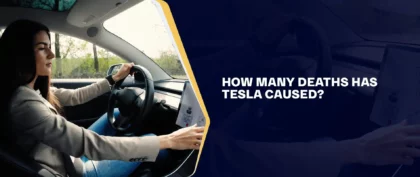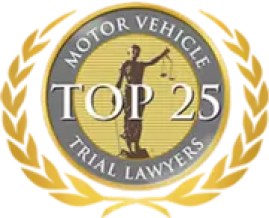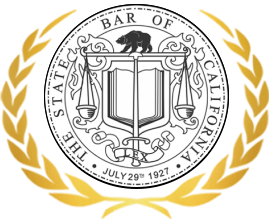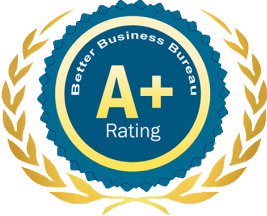Guidelines for Driving in Winter From the California Department Of Transportation
The Value in Preparing to Drive in Winter Conditions
Anyone driving across mountainous terrain during the winter season is advised by Caltrans to have everything you need to deal with dangerous driving conditions. The following suggestions promote the safety of all drivers during the winter:
- Stay updated on dangerous conditions such as road closures by keeping track of Caltrans on various social media platforms.
- Watch a winter driving guide video and print out the winter driving brochure to store in your automobile.
- When road closures occur, drivers may turn around instead of waiting for the closed road to reopen.
- The Caltrans QuickMap can assist you with checking roadway conditions, road conditions, and other winter driving updates.
- Print the Operation Snowflake brochure for information regarding road closures to aid drivers traveling going to the Tejon Pass and grapevine segments of Interstate 5.
Updates on Mountain Pass Closures
To hear updates on mountain pass closures, check the Caltrans Highway Information Network at (800) 427-7623.
What You Should Do Before Driving to the Mountains During the Winter
Although drivers are sometimes at risk of encountering dangerous conditions while driving in the mountains of Southern California, the following safety tips are essential for a safe trip. The following guidelines provided by Caltrans can make driving through the mountains safer and more enjoyable:
- Always keep an extra key to your automobile on your person. If you have to place chains on your tires or make a repair, you do not risk locking yourself out of your automobile during winter conditions.
- Save the Caltrans Highway Information Network phone number in your contacts on your mobile phone: (800) 427-7623.
- Check the heater and exhaust systems on your vehicle as well as the defroster, windshield wipers, and brakes.
- When you are traveling around the mountains, you may notice that traffic is rerouted from the main highway. An updated map will help you and others navigate through unfamiliar roadways.
- Colder temperatures can affect all parts of your automobile’s engine. One important element to check before heading to the mountains is the antifreeze.
- You may encounter a road hazard or motor vehicle accident on your journey to the mountains. To prepare for this situation, you should pack additional clothes, blankets, food, and water before you depart on your trip during the winter.
- Icy windshields can cause cracks and other dangerous conditions. Adding concentrated windshield washer fluid to the reservoir will help you avoid icy windshields. The California Air Resources Board website offers information regarding concentrated windshield washer fluid.
- Ice scrapers, a de-icer, and a broom are all essential for driving in winter conditions. Bringing along a shovel can help you remove snow from around your automobile if you find yourself in heavy snow. Also, old towels are helpful for preventing injuries to your hands during freezing conditions.
- Always check your tires before embarking on a winter trip to the mountains. The tread on your tires should not be worn down. All tires on your motor vehicle should be inflated and full. The tires should work well and fit your automobile. Chain links and a flashlight will help you if you need to change one of your tires. Chains will need to be installed onto the drive wheels. You will need to know if your motor vehicle is rear or front-wheel drive.
Recommendations for Safe Driving
- Give yourself enough time to arrive at your destination. Storm conditions, ice on the roads, and blizzard conditions may make your trip longer than expected. If you leave early, you will have a greater chance of arriving at your destination on time.
- If you see equipment operators engaged in snow removal, do not assume that the operator will be looking out for passing vehicles. Be careful when you are passing snow removal equipment operators.
- Do not attempt to drive to the mountains on an empty gas tank. Sudden storms can force you to drive for longer periods than you originally anticipated.
- Be cautious when driving near sand or cinder-spreading trucks. Salt brine trucks can also be dangerous when you are traveling through the mountains in the winter.
- Your windows and windshield should not be dirty or obstructed with any material. A scraper will help you clean your windows if you are traveling through a storm during the winter. A clean cloth can help you remove fog from your automobile windows.
- Snowplows frequently operate during the mountains in the winter months. You should not get close to any plow truck, snow plow, or other snow removal vehicles.
- Do not drive at excessive speeds. You cannot drive on snow and ice in the same manner that you drive on dry pavement in the summer months. When you are driving on the snow and ice, it will take you longer to come to a full stop. Keeping a safe distance between you and the vehicle in front of you will help you have a safe trip to the mountains. Bridges may ice over before the main road. Do not make sudden stops or turns while driving on the snow and ice.
- Do not waste fuel while traveling in the mountains during the winter. If your vehicle breaks down, check for any monoxide or exhaust leaks that can endanger you and any passengers in your vehicle.
- Always pay attention to your surroundings. During the winter season, you may have low visibility. Drive at a slow rate of speed and try to see if any drivers are flashing their lights. You may be unable to see any vehicles until they are immediately in front of you. Be vigilant during any winter storms.
Chains May Be Required
Drivers may be required to use traction chain controls while driving in the mountainous terrain of Southern California. Signs are typically posted alongside the road detailing chain control requirements:
- If you are going to remove chains from your vehicle, you need to drive until you see the “End of Chain Control” area to a safe place where you can remove the chains.
- If you see highway signs demanding that you put chains on your vehicle, then you must stop and install chains on your automobile. The California Highway Patrol can fine and cite any vehicle violating the chain control requirements. Drivers may have approximately a mile to stop and install chains.
- Chain installers may attempt to rent or sell chains, but such action is not permitted. If you use a chain installer, obtain a receipt and write down the chain installer’s badge number. Chain installers are not Caltrans employees.
- Road conditions and weather conditions may change in a matter of minutes in the mountains. Be vigilant about different areas where you may be required to install chains on your vehicle.
- Pull your vehicle to the right side of the roadway when you install your chains. If you try to place the chains on your automobile in a heavy traffic area, you will endanger yourself and others.
- Do not take your vehicle over 30 miles per hour in an area where chains are required.
Chain controls and chain installation pages can help you understand more details regarding chain controls. If you are a truck driver, you can read our Truck Chain Installation page.
Your Safety and the Caltrans Highway Information Network (CHIN)
Checking the road conditions while you are traveling will keep you and others safe. The Caltrans Highway Information Network can be reached at (800) 427-7623. The areas of California and Western Nevada are covered. Conditions change rapidly, and this information network is constantly updated. The Caltrans Highway Information Network will provide you with safety notifications that can keep you and your family safe during your trip.
Caltrans QuickMap
The QuickMap is a California map of updated traffic changes that may include video cameras, chain controls, and road closures. The map is a great tool for individuals who are going to the mountains to ski or engage in other outdoor winter sports activities.
Chain Controls and Chain Installation
Chain Controls
The Caltrans Highway Information Network (CHIN) can offer you updated information regarding chain control requirements. The Caltrans Highway Information Network (CHIN) is (800) 427-7623. The Caltrans QuickMap will also contain information regarding chain controls.
Installing Chains

- Before you remove the chains, you should move your vehicle to the “End of Chain Control” area to pull over and remove the chains in a safe manner.
- Sudden changes in weather conditions will affect road conditions, and the chain control areas may change from place to place as weather conditions develop.
- Always obtain a receipt and a badge number if you use a chain installer to help you put chains on your motor vehicle. Chain installers are not employed by Caltrans. No chain installer is permitted to sell or rent chains.
- Do not drive over 30 miles per hour when chains are on your vehicle
- Pull off the highway when you install chains on your vehicle. Do not pull over in the middle of the highway where you will endanger yourself and others.
The California Department of Transportation does not provide recommendations for specific types of tire chains. Your automobile’s manufacturer’s specifications will help you determine which tire chains to use for your vehicle.
Chain Requirement Levels
Traction chain controls may be required in the mountainous areas of California during the winter season. Specific requirements will be posted on signs alongside the road. Three primary chain requirement levels exist in California:
- All automobiles except passenger vehicles must have chains – Also, light-duty trucks under 6,000 pounds gross weight with snow tires on at least two drive wheels are not required to have chains. The chains must be held by vehicles using snow tires. Vehicle towing trailers must have chains on one drive axle. Trailers with brakes must contain chains on at least one axle.
- Chains must be on all automobiles except four-wheel and all-wheel drive vehicles with snow-tread tires on all four wheels – Four-wheel and all-wheel drive vehicles must carry traction devices in chain control areas.
- Chains or traction devices must be affixed to all vehicles without exception.
The first two requirements are more common than the third. Highways are often closed before the third requirement is enforced. Designations may vary depending on local use and regulations. Following the instructions provided by Caltrans or CHP employees is imperative even if it is contrary to road condition broadcasts or information related to safety and road conditions.
California Vehicle Code § 605 states that tire traction devices are “mechanisms having a composition and design capable of improving vehicle traction, braking and cornering ability upon snow or ice-covered surfaces. Tire traction devices shall be constructed and assembled to provide sufficient structural integrity and to prevent accidental detachment from vehicles.
Tire traction devices shall, at the time of manufacture or final assembly, bear a permanent impression indicating the name, initials, or trademark of the assembling company or primary manufacturer, as well as the country in which the devices were manufactured or assembled in final form.”
The complete version of the California Vehicle Code is provided free at Leginfo, a website containing California legislative information. Caltrans reserves the right to stop any vehicle from entering a chain control area when it is determined that the vehicle will not be able to safely travel the area.
Caltrans Highway Information Network (CHIN)
Caltrans officials advise all drivers to check changes in road conditions frequently. The Caltrans Highway Information Network was devised to help drivers stay aware of changing road conditions. All drivers may call (800) 427-7623 for updated information regarding Western Nevada and California. This network is constantly updated and is voice-activated to protect drivers from distractions.
Caltrans QuickMap
See Caltrans QuickMap for a California map of traffic reports that contains information regarding chain controls, video cameras, message signs, and lane closures.
Truck Chain Requirements
Chain requirements pdf documents contain diagrams and detailed instructions describing how to apply chains to a vehicle. Chain controls offer snow-tread tire information. Road conditions contain current road conditions and chain requirements.
Which specific California vehicle code sections discuss chains?
California Vehicle Code section 605 regulates chains. California Vehicle Code sections 27450 to 27503 also contain statutes regarding chains. California Vehicle Code section 26104 contains regulations on laboratory testing:
26104. (a) Every manufacturer who sells, offers for sale, or manufactures for use upon a vehicle devices subject to requirements established by the department shall, before the device is offered for sale, have laboratory test data showing compliance with such requirements. Tests may be conducted by the manufacturer.
(b) The department may at any time request from the manufacturer a copy of the test data showing proof of compliance of any device with the requirements established by the department and additional evidence that due care was exercised in maintaining compliance during production. If the manufacturer fails to provide such proof of compliance within 30 days of notice from the department, the department may prohibit the sale of the device in this state until acceptable proof of compliance is received by the department.
What is the difference between the first and second requirements?
Caltrans uses these designations within the department to describe chain restrictions, and the designations are often used in traffic reports. News outlets often use this nomenclature in their reporting. Three main chain restriction levels exist in the state of California.
- Requirement 1 – Under this category, chains are required on all automobiles except passenger vehicles and light-duty trucks under six-thousand pounds and equipped with snow tires on at least two drive wheels. If a vehicle uses snow tires, it must carry chains. If a vehicle is towing a trailer, it must contain chains on one drive axle. If the trailer has brakes, it must have chains on at least one axle.
- Requirement 2 – Chains must be on all automobiles except four-wheel-drive automobiles under 6,500 pounds gross weight. They must also be equipped with snow tires on every wheel. atour-wheel-drive vehicles using snow tires must use chains for one set of drive wheels.
- Requirement 3 – Under this category, chains are required on all vehicles without any exceptions.
The first two requirements are the most common conditions encountered by drivers. A highway will close down before the third requirement is enforced. Local areas may use distinct nomenclature that differs from the ones discussed here. You must follow any directions and commands by Caltrans personnel, even if these commands are contrary to information and directives broadcast on the radio.
Must I place chains on my trailer?
The trailer must be equipped with brakes if it has at least one axle chained.
Must I put chains on when towing trailers?
Yes.
On which axle must I install chains?
The drive axle must have chains installed on it, but all-wheel drive vehicles and four-wheel-drive vehicles may have chains installed on either drive axle. The rear axle is preferred, but the vehicle manufacturer may recommend the front axle, in which case it is best to adhere to the requirements of the vehicle’s manufacturer.
What if my vehicle’s manufacturer recommends that chains not be installed? Must I still install chains?
Yes. If your vehicle does not accept conventional link-type chains, it will likely fit Spikes Spider or cable chains. You must not enter a chain control area if your automobile is not equipped with a tire traction device. Do not enter a chain control area if you do not have tire traction devices installed on your automobile.
Is there any difference between all-wheel drive and four-wheel drive?
All-Wheel drive and four-wheel drive are the same. All-wheel-drive systems may be slightly different from four-wheel-drive systems, but for chain control purposes, four-wheel drive and all-wheel drive are the same.
Must I carry chains if I have studded snow tires?
Yes, you need to carry chains because studded snow tires are not tire traction devices, and these may not be substituted in the place of chains.
If I drive a commercial truck that is heavy-duty, do I still need to carry chains?
Yes, no exemption exists for heavy-duty commercial vehicles over 6,500 pounds equipped with snow tires. Chains have to be installed on heavy-duty commercial vehicles at any place where chain controls are posted.
Must I carry chains if I have snow tires?
Yes. Weather conditions may not make it necessary to use the chains, but to enter a chain control area, you must have a set of chains for your automobile in your custody and control. If the weather conditions worsen, you will have trouble controlling your vehicle.
If I have four-wheel drive, must I have chains?
Yes, to enter a chain control area, you must have a set of chains for one drive axle for your vehicle in your custody or control. You must stop and install the chains if weather conditions deteriorate.
What are the exact dates for studded snow tires?
From November 1 until April 30, studded snow tires are permitted in the state of California. Studded tires are permitted in any location inside the state of California. Studded snow tires are categorized as different devices from tire traction tools and may not be used in place of chains.
My radio says trucks are being screened. What does this mean?
Caltrans often sets up truck screening checkpoints on the roads to major mountain highways. Screening forces all heavy-duty trucks to stop and show Caltrans personnel that they have the required chains on board the vehicle. If a truck does not have chains, then that vehicle will be forced to return to a lower elevation until weather conditions improve. Trucks that are not equipped with chains cannot park at higher elevations.
Must chains be inside vehicles that are exempt?
If a vehicle does not have chains, it is not permitted to enter a chain control area, and it must go to a lower elevation where chains are not mandated. No provisions exist to park vehicles at chain control checkpoints.
May I use cable chains?
It depends. Cable chains are allowed for passenger automobiles and light trucks under nearly all weather conditions. Cables are not as strong as link chains under extreme conditions at extremely high elevations and steep grades. These may not be permitted on local conditions determined by Caltrans. Heavy trucks are required to have link chains on at least the main drive axle when chain controls are posted over Donner Pass.
What dates apply to the chain law?
California does not adhere to specific dates when vehicles must carry chains. If the road is posted with signs stating that chains are required, then all heavy-duty vehicles must have chains mounted on them to proceed. Some vehicles may not be forced to install chains at this time. Exceptions, if any, will be posted on the sign.
What is a traction device?
California Vehicle Code Section 605 defines tire traction devices as “devices or mechanisms having a composition and design capable of improving vehicle traction, braking, and cornering ability upon snow or ice-covered surfaces,’ and include conventional link-type tire chains and cable chains, as well as other less conventional devices such as Spikes Spyder. When the term “chains” is used in this context, it means any tire traction device unless a link-type chain is intended.





































